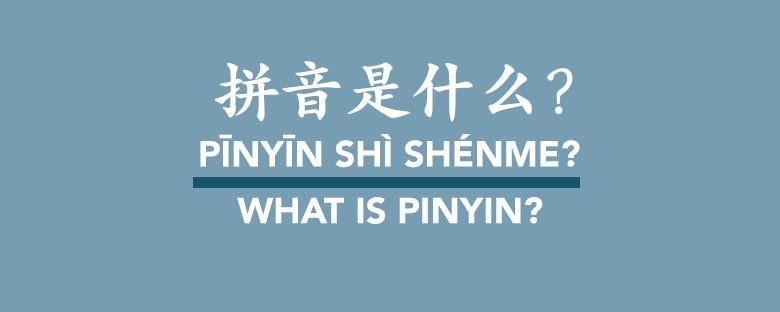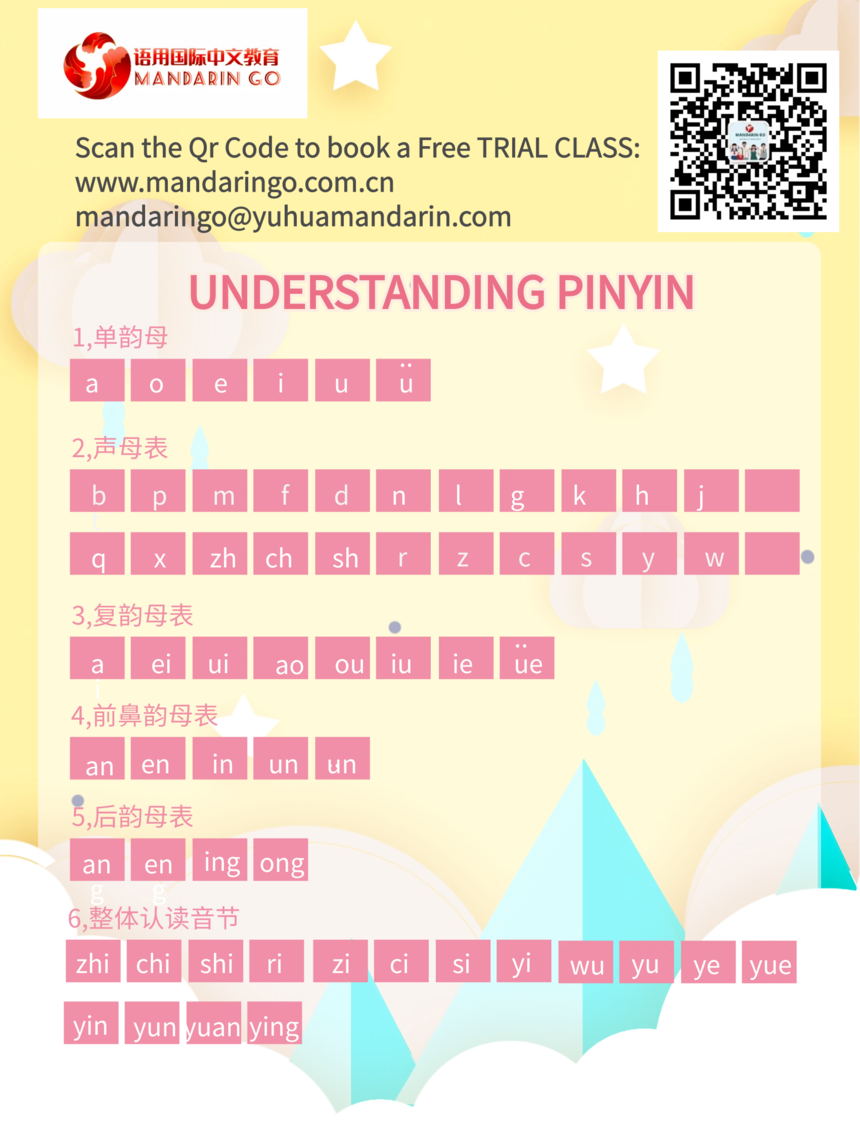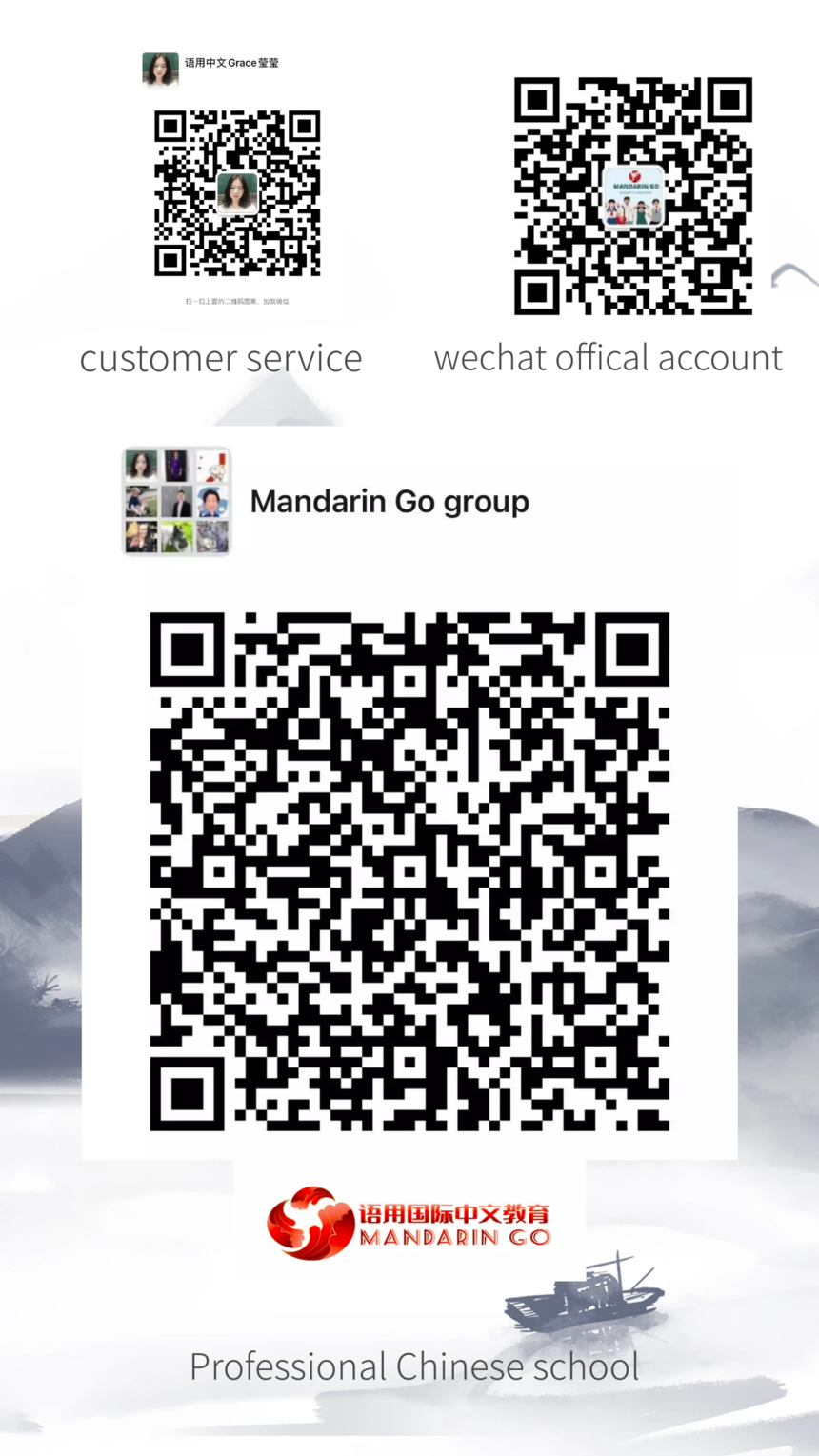Our Blog
|
Mandarin Go | MANDARIN GO’S TIP #1 – Everything you need to know about pinyin
Many students who learn Chinese are surprised to learn that before delving into the mysteries of Chinese characters (汉字 hànzì), they must first learn a completely different writing system, called pinyin. What is pinyin? Pinyin, an integral part of learning Chinese The Chinese language has a long history - the earliest known origins are believed to date back more than 6,000 years ago. Chinese characters are notoriously difficult to learn, even for native speakers. This is where pinyin comes in handy... Pinyin is the official system of Romanization of Chinese language. In short, it is a phonetic system for writing Mandarin using the Latin Alphabet. Chinese is difficult, but learning Pinyin at the beginning of learning the Chinese language greatly accelerates the speed at which a typical student acquires the language. A Brief History of Pinyin In 1605, the Jesuit missionary Matteo Ricci published the first known Chinese-Western text, entitled Xizi Qiji. This system used the Roman alphabet to transcribe the Chinese language. It is necessary to advance in time, until the beginning of the 20th century to find several romanization systems competing with Xizi Qiji: the Wade-Giles system and the Gwoyeu Romatzyh. Nevertheless, those systems came with its share of problems. Due to the chinese side's persistent dissatisfaction with existing romanization methods, the researchers then continued to look for a better solution. In the 1930s, the Chinese Communist Party, in collaboration with the leaders of the USSR, introduced a phonetic alphabet using Roman letters called Sin Wenz, meaning "new writing". The aim was to improve literacy in the Russian Far East, especially for Chinese immigrants. Sin Wenz reached its peak in the 1940s. Zhou Youguang, modest father of pinyin
In the 1950s, a group of Chinese linguists began work on a new Romanization system to increase literacy. Linguist and sinologist Zhou Youguang produced a major breakthrough by inventing the Hanyu Pinyin (汉语拼音). Many people consider Zhou to be "the father of pinyin," but he humbly said: In other words, Zhou felt that his written system was simply the product of centuries of transliteration from Chinese to Romanized spelling. Pinyin becomes official internationally On February 11, 1958, pinyin officially replaced all other methods of romanization in China. However, it took time for the new system to spread overseas. Fortunately, the Western world has gradually adopted pinyin over the past 70 years. Today, it is recognized by China, Taiwan, Singapore, the United States and the United Nations as the official system of Romanization of the Chinese language. Pinyin in modern times Students of the Chinese language often believe that only non-native speakers use pinyin. However, native Chinese students also learn the pinyin system alongside Chinese characters as early as kindergarten. Although pinyin disappears from textbooks after primary school, it is still useful for learning the pronunciation and tones of new characters. In addition, native Chinese speakers use pinyin daily when typing on computers or mobile phones. Learning pinyin at the beginning of your Chinese studies helps establish a solid foundation with the language and will help you learn new words. However, do not forget that this system is only a tool to help with the process of learning Chinese. Can I just learn pinyin and not Chinese characters? Many students wonder if they can simply learn pinyin and avoid Chinese characters altogether. This is extremely not recommended! There are many reasons why learning characters alongside pinyin is essential. Most importantly, almost every pinyin sound has several commonly used Chinese characters that it represents. For example, take the pinyin sound "guo". This phonetic combination can mean fruit (果 guǒ), country (国 guó), crossing [a road] (过 guò, as in 过马路 guò mǎlù), and a variety of other words. As you progress through your studies, trying to remember these different words as a single combination of pinyin becomes ineffective. Learning Chinese characters makes it easier for you to associate meaning with pronunciation. Pinyin is the “Rosetta stone of the Chinese language” Chinese characters are beautiful, intriguing and meaningful. They are living pieces of Chinese history deeply rooted in Chinese culture. Characters make learning Chinese exciting and adventurous when you discover the "hidden meaning" behind radicals, characters, and phrases. Pinyin is the Rosetta Stone to unlock this wonderful universe. Therefore, if you decide to focus on learning Chinese, it is essential to understand both the importance and limitations of pinyin, as well as the cultural significance and history of Chinese characters.
|









